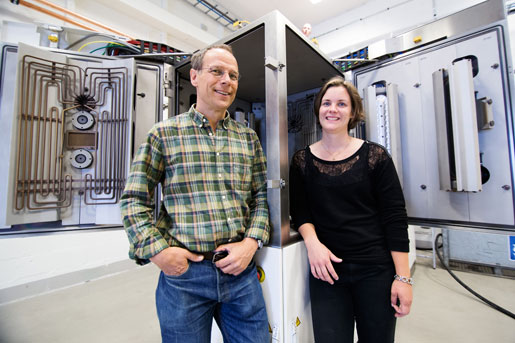 ”We fought to get the production of the detectors here, and now we’re
busy building the facility at Wahlbecks business park”, says Dr Carina
Höglund, researcher at ESS, formerly at Linköping University.
”We fought to get the production of the detectors here, and now we’re
busy building the facility at Wahlbecks business park”, says Dr Carina
Höglund, researcher at ESS, formerly at Linköping University.
She is pictured above together with Jens Birch, professor of thin film physics, by the newly installed surfacing system that is the heart of the facility. Over the next eight years, 6,000 square metres of a micrometre-thin layer of the semimetal boron-10 will be produced. It is one of the few materials that can capture neutrons.
When the ESS opens in 2022, researchers will be able to examine their samples at extremely high resolution. When neutrons pass through the object, the are captured by the detectors that measure the change in speed and direction – information that provides a picture of the sample’s inner structure.
Photo: Anna Nilsen